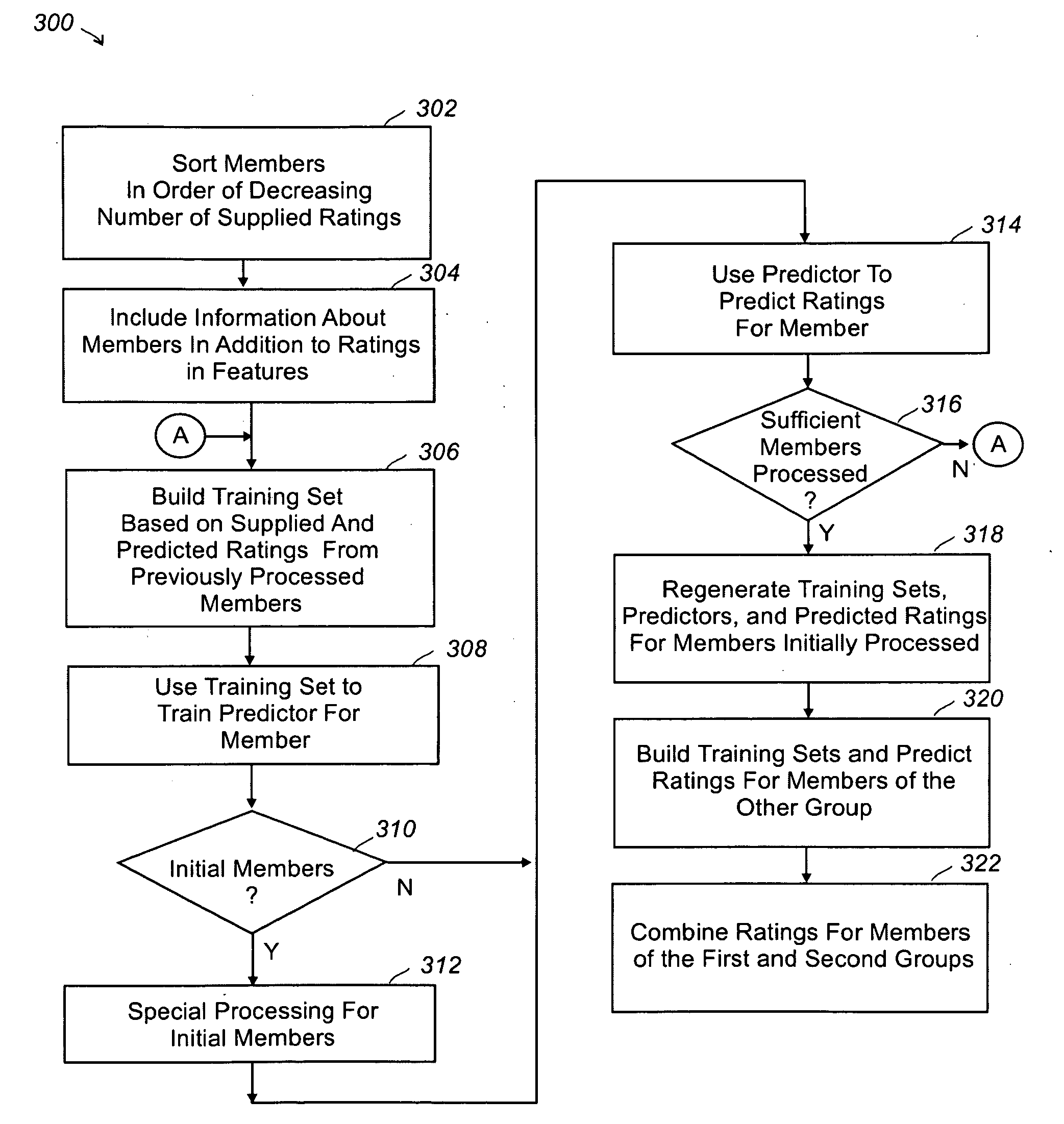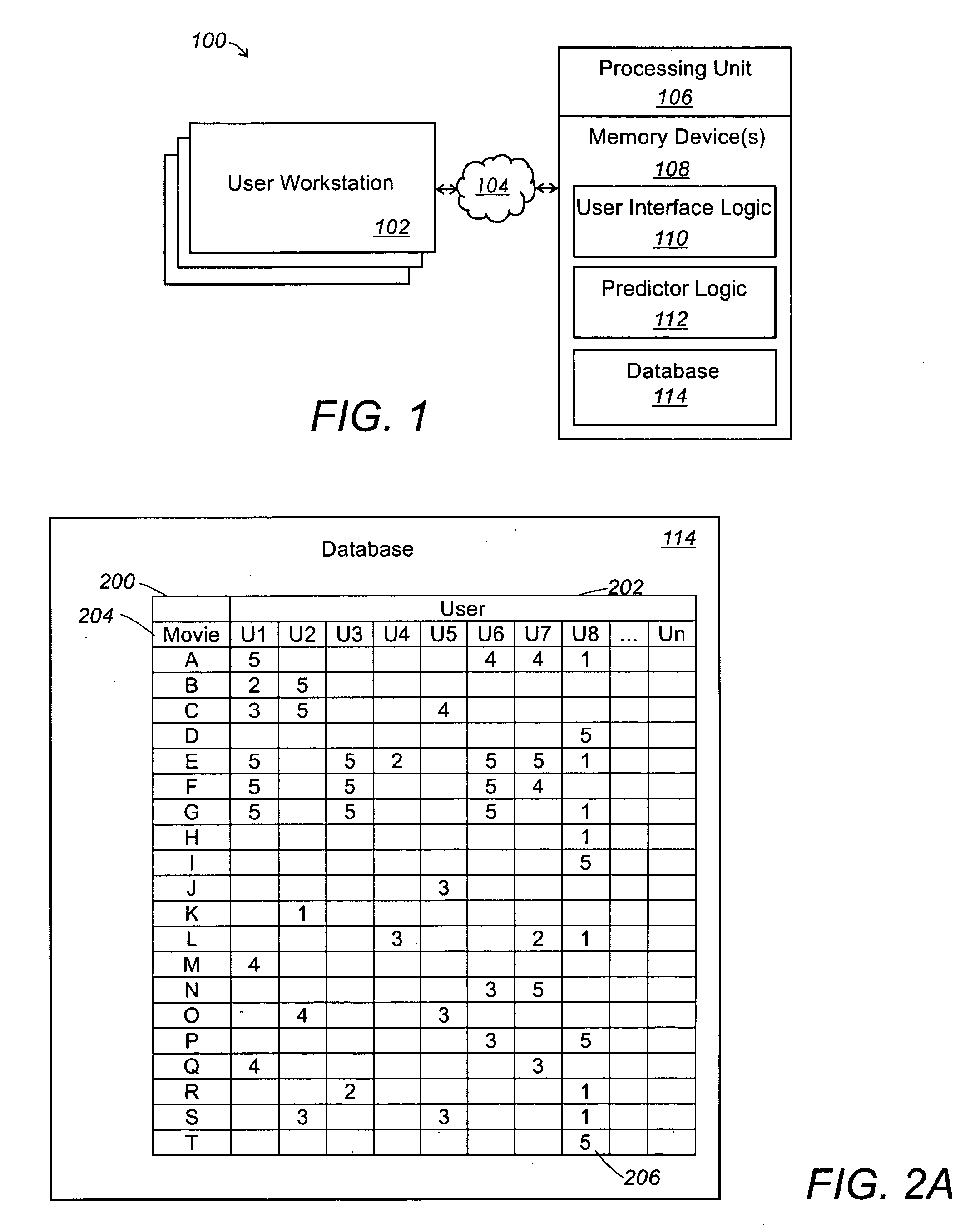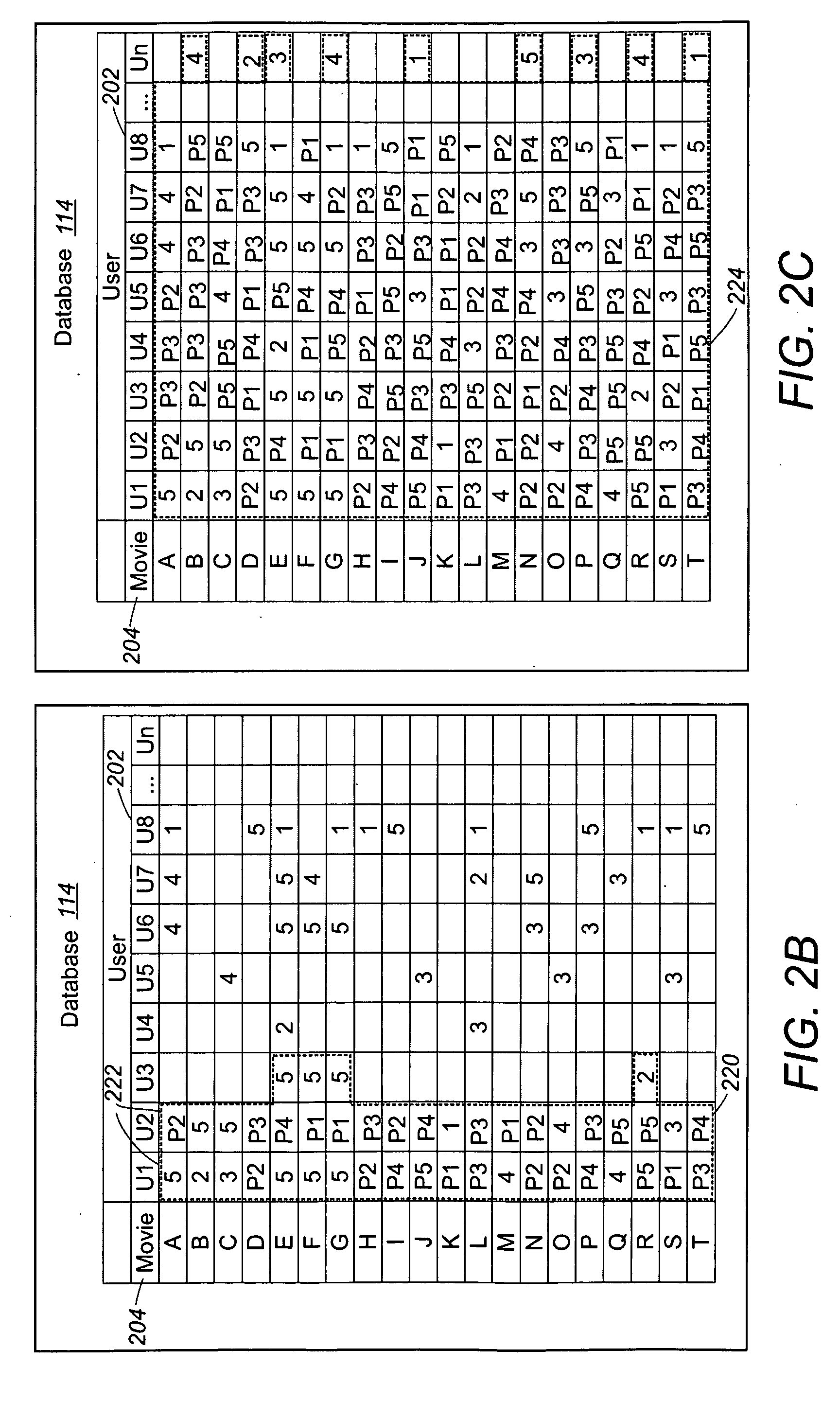Systems and methods for collaborative filtering using collaborative inductive transfer
a filtering system and inductive transfer technology, applied in the field of systems and methods for collaborative filtering using collaborative inductive transfer, can solve problems such as difficulty in collecting a large sampl
- Summary
- Abstract
- Description
- Claims
- Application Information
AI Technical Summary
Problems solved by technology
Method used
Image
Examples
Embodiment Construction
[0008]Referring to FIG. 1, an embodiment of a system 100 for collaborative filtering using collaborative inductive transfer is shown. The embodiment of system 100 shown includes one or more user workstations 102 coupled through network 104 to communicate with processing unit 106. Processing unit 106 can be configured with or can remotely access user interface logic 110, predictor logic 112, and database 114. For example, database 114 can be implemented in a remote data server (not shown) and accessed by processing unit 106 via network 104. Some or all of user interface logic 110 can be implemented in user workstations 102 instead of or in addition to processing unit 106.
[0009]The term “collaborative filtering” includes attempting to identify for one or more members of a first group, potentially interesting members of a second group by leveraging aggregated input about the affinity or preference between individual members of the two groups. Note that the terms “members of a first gro...
PUM
 Login to View More
Login to View More Abstract
Description
Claims
Application Information
 Login to View More
Login to View More - R&D
- Intellectual Property
- Life Sciences
- Materials
- Tech Scout
- Unparalleled Data Quality
- Higher Quality Content
- 60% Fewer Hallucinations
Browse by: Latest US Patents, China's latest patents, Technical Efficacy Thesaurus, Application Domain, Technology Topic, Popular Technical Reports.
© 2025 PatSnap. All rights reserved.Legal|Privacy policy|Modern Slavery Act Transparency Statement|Sitemap|About US| Contact US: help@patsnap.com



